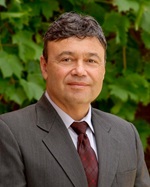West campus: (928) 445-6025 / East campus: (928) 442-8117
Diagnosis, treatment, surgery, rehabilitation, and education come together for coordinated and
exceptional heart services at the James Family Heart Center at Dignity Health Yavapai Regional
Medical Center.
Our multidisciplinary team includes cardiothoracic surgeons, cardiologists, interventional cardiologists,
interventional radiologists, structural heart specialists, registered nurses, and more. State-of-the-art
technology in the hands of this experienced team makes the James Family Heart Center northern
Arizona’s premiere heart program.
Recovering from Heart Surgery
Yavapai Regional’s Cardiac Rehabilitation team helps people with heart disease:
- Reduce risk factors
- Embrace an active lifestyle
- Improve the quality of their lives
Our two-phase program is individually tailored, combining exercise, information, and assistance.
It starts during hospitalization at Yavapai Regional and builds as you become stronger and more
independent.
- Begins in the hospital with mild exercise and opportunities to learn about your heart
disease
- Supports lifestyle changes to promote good health
- Helps you develop hospital discharge goals and identify what you’ll need to continue to
get healthy after you leave the hospital
- Creates a bridge to Cardiac Rehabilitation Phase 2
- Involves you, your physician, and the Cardiac Rehabilitation team in creating an
individualized program to build strength and promote health
- Includes individual exercise sessions monitored by members of our Cardiac
Rehabilitation team
- Features a 30-minute individual counseling session with a dietitian, diabetes educator, or
pharmacist during your enrollment in the program
- Focuses on preventive strategies, ways to manage heart disease risk factors, and
provides information on heart health

Pierre Tibi, MD, FACS
Medical Director, James Family Heart Center at
Dignity Health Yavapai Regional Medical Center &
Cardiothoracic Surgeon, Yavapai Cardiac Surgery